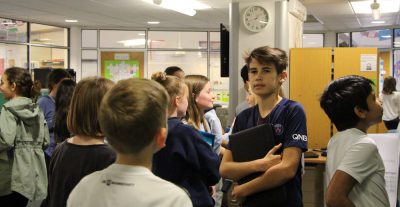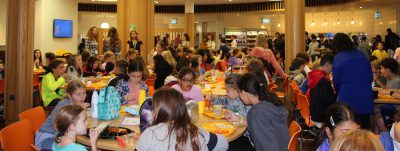
This school year, the middle school enrollment has increased by 16 students, from 472 to 488. While this may seem like an insignificant change, it has actually caused many changes in the MS.
Ms. Jodi Warren, the dean of admissions said, “Everything about this year was unusual.” Both the number of returning students and the number of new students was higher than anticipated, resulting in an increase of size of the middle school. This has affected the entire middle school in many ways.
Two of the main statistics that the admissions department considers are the re-enrollment rate and the yield. The re-enrollment rate is the percentage of students who return to ASL the next year. Ms. Warren said, “We have to do the admissions before we know for sure who’s coming back. We will get averages over time, per grade, to see how many students we think will return.”
The re-enrollment rate in previous years has averaged 87%. However, this past year the overall re-enrollment rate was 90% and the sixth to seventh grade re-enrollment rate was 98%. As a result, the size of the MS and particularly the seventh grade were dramatically affected.
The other statistic the admissions department considers is the yield, or the number of students that accept their offered position at ASL. The yield has been between 70% and 75% in previous years. However, this year the yield was 78%. Both of these circumstances when combined caused the increase in the MS enrollment.

The seventh grade is particularly large, with 135 students. This became a problem during the seventh grade fall trips, as both the students and teachers were cramped. The seventh grade was already planning on splitting into two locations, but they were still short on space. Mrs. Tracy Steege, a seventh grade English teacher and team leader said, “We were all very squished.”
Mrs. Steege also said that in one of the centers, chaperones had to share rooms, there was not enough seating in the dining room, and not enough minibuses for transportation throughout the week.
Apart from the trips, the size of the MS enrollment affects teachers every day. In the mornings during advisory time, every single classroom is being used for an Advisory. This leaves language teachers who don’t teach advisories with no place to go in the morning. Señora Carmen Montaraz, a Spanish teacher, goes into the yellow pod during advisory, but she is unable to have private conversations or look at students’ grades and assignments. “Everybody needs a quiet space to work,” she said, “and in the pod you don’t have any privacy.”
However, it is not only language teachers who are affected by the MS enrollment size. Mrs. Steege talked about the increase in enrollment and how it affected her as a teacher. She said, “When I grade papers, it probably takes me about ten minutes per paper. That’s an extra eighty minutes per assignment.” She also commented that it is harder and takes longer to have individual conferences with each student.
A larger MS does mean that ASL is getting more tuition money, and allows the school to use that money to offer more programs and trips for students. However, ASL is not planning on expanding the MS any more in the near future. Mr. Peter Lutkoski, the MS principal said, “We have no plans to increase enrollment [in future years].”
